As a young woman Lilian Hasler had a strong desire to become a sculptor. This was not so easy in the late 1970s but she was able to work in a sculpture company and attend the School of Arts and Crafts in Bern while she was working. She then became a member of the Working Community of Zurich Sculptors in Schlieren, where she still works today and is active on the board. She also completed an MAS in Cultural and Gender Studies at the Zurich University of the Arts and a CAS in Applied History at the University of Zurich. As president of Visarte.Liechtenstein it is important to her to reaffirm the appreciation for art as a profession in the country and to create good conditions in which artists are able to live and work. As a lecturer, it is important to her to negotiate questions of design and presentation with the students. In her spare time Lilian Hasler is a passionate mountain walker. She comes from Eschen in Liechtenstein and now works and lives between Zurich and Eschen. She has raised two children and has four grandchildren whom she looks after regularly. She is 60 years old.
Where and how did you grow up?
I grew up in the canton of Aargau in the 1960s because my father worked in that part of Switzerland. We regularly spent our school holidays in Eschen, as my grandfather’s large farming household captivated the interests of all of his children and grandchildren.
In Switzerland, as an only child, I was quite a good student and started orienteering at the age of 10, where I made it into the Swiss National B squad. Sport, being outdoors, being in motion, was important to me even as a child.
The holidays in Eschen were always a highlight for me, because on the farm with tractors, my cousins, my uncle and my grandparents, another world simply opened up to me that I couldn’t experience in Aaargau. There we lived in a 4-room flat. The idea of the nuclear family, which promised an economic upswing in the 1960s, could never quite satisfy me. But my runs in the forest, the competitions at Swiss orienteering events, and the membership in the Blauring gave me a lot of freedom.
Could you describe your professional background?
As a 16-year-old pupil at the district school, I didn’t feel like going to the cantonal school any more and I wanted to become a sculptor. The father of one of my classmates was a sculptor and that really inspired me. My drawing teacher also motivated me to take this path. My parents were skeptical at first, as this profession was not familiar in our family environment. However, due to my continuous training as a runner, I was quite strong-willed and I was able to achieve my goals.
After completing my training and attending the School of Applied Arts in Bern, I very quickly joined a studio community where I still work today. The discussions with fellow artists and the constant struggle with working processes and searching for forms have influenced my work.
When my two children were grown up, I received a one year sabbatical scholarship from Liechtenstein, which I spent in India. India interested me less as an esoteric country than as a country of immense contrasts. Alongside great poverty, there is immeasurable wealth. I was interested in what emerges from the clash of these poles. My partner Gaudenz then took a job in India for a Swiss company, so we lived in India for over 6 years. This had a great impact on my way of thinking and working.
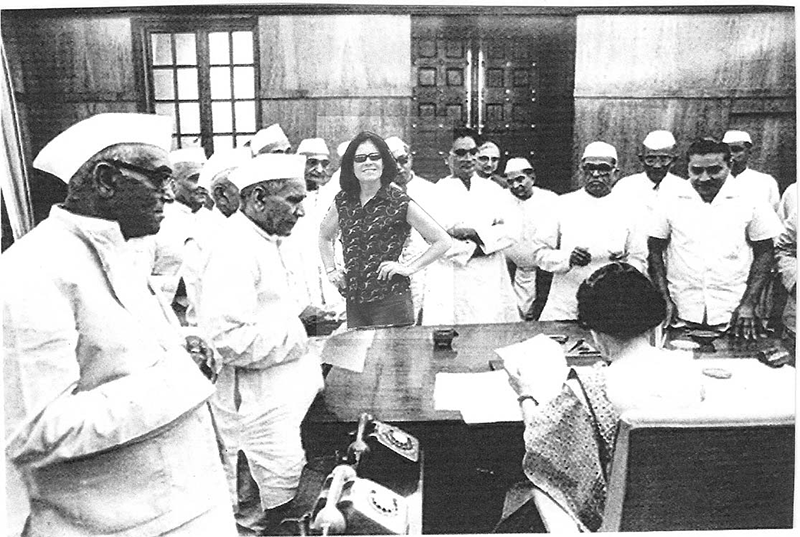
Were there certain events or stations that were formative for your career?
The 80s in Zurich, the time of the autonomous youth centre AJZ and the youth riots of that era were formative. By breaking out of a normative family structure and trying out new forms of living and working, I gained many insights into possible social conditions.
The studio community had a strong influence on my development. The conversations and also arguments about form and content, but also the possibility of purchasing large machines and equipment together, have decisively brought me forward.
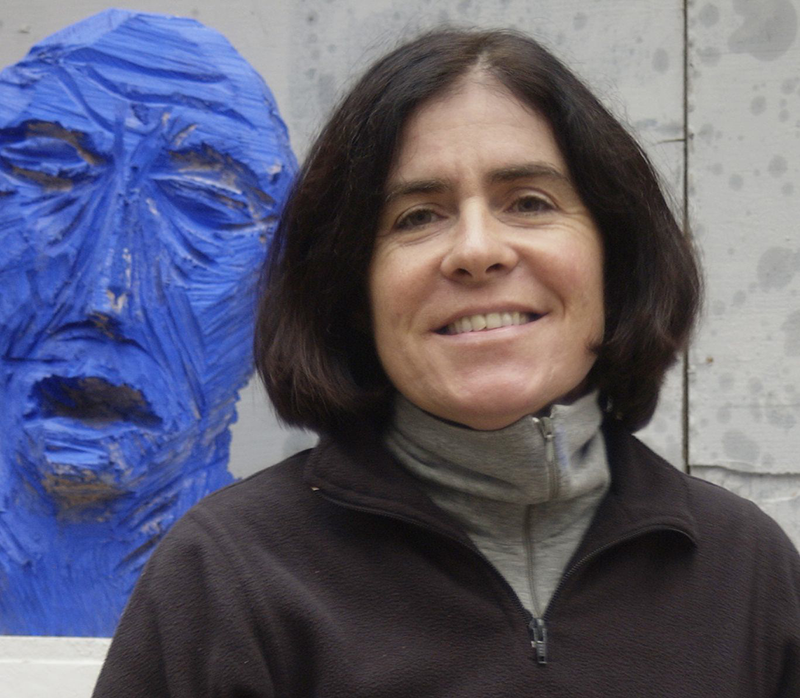
The stay in India has permanently changed the way I look at Europe and the world.
Were there certain people who were formative for your career?
Robert Allgäuer was an important figure as a mentor at the beginning of my artistic activity. I was able to benefit enormously in conversations with him and also in the concrete support he gave to me.
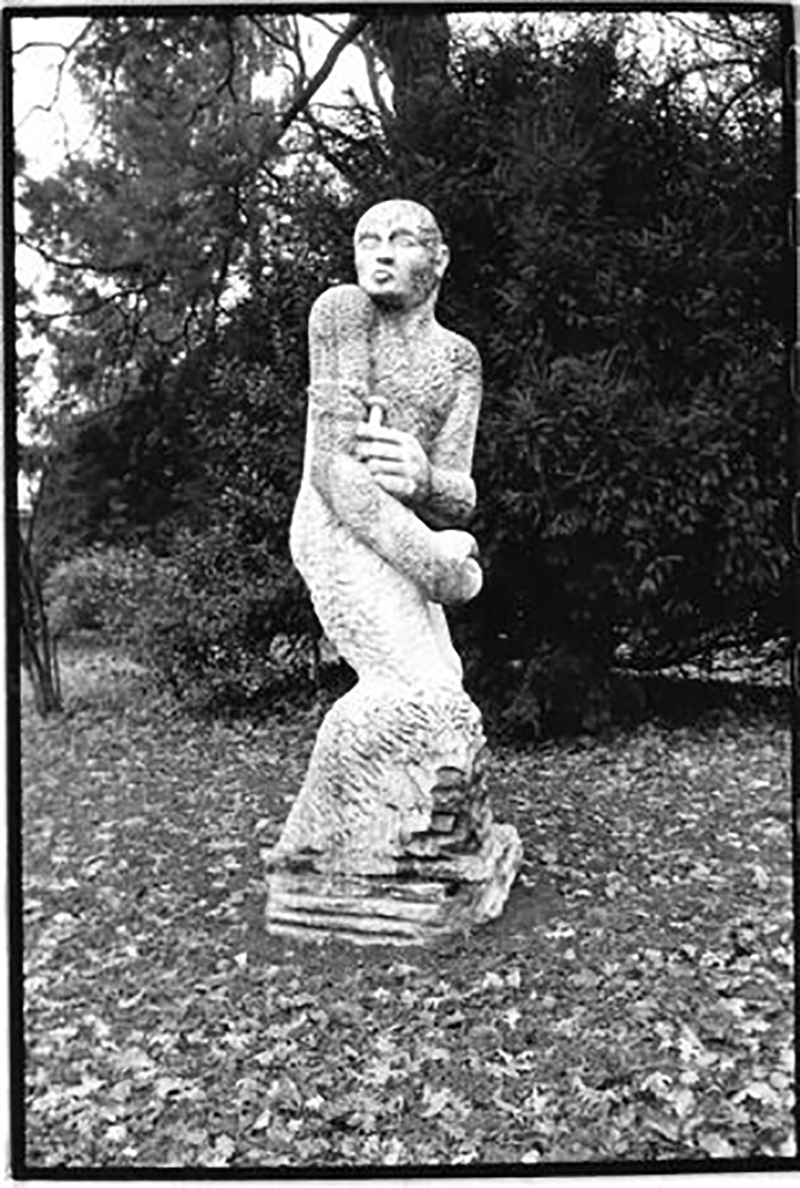
My partner Gaudenz, with whom I have spent my life for almost 30 years, is my permanent sparring partner. With him I can critically reflect and develop my work.
My two children have also determined the structure of my life. While my artist colleagues cultivated a free-style lifestyle in their younger years, it was important for me to structure my day clearly. I always worked from 9 a.m. to 3 p.m. without interruption and then was a family woman from 4 p.m. onwards. Today, I still like to have discussions with my children, even though they have long since grown up and have their own families. I value the discourse with young people enormously.
Has your environment supported you in your career?
My parents and later my partner have always supported my work. Especially as an artist, sometimes you need financial support as well as moral support. I have always received this in emergency situations.
What are your current activities?
I work on my artistic projects in my two studios, teach sculpture at three different art institutions and am also active in cultural politics as president of Visarte.Liechtenstein, and as a board member of the Working Community of Zurich Sculptors AZB.
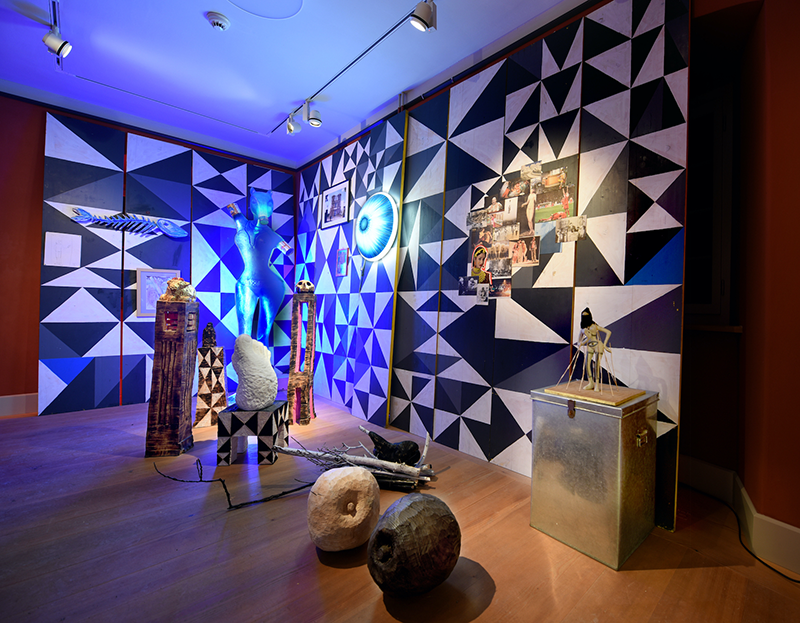
Does what you are currently doing fulfil you?
Even as a young woman, I realised that I don’t like working in hierarchical structures and don’t like to be told what to do. That’s why my working conditions, as I have created them over the years, are ideal for me.
The artistic process in my studio is not always a flight of fancy, but sometimes there are these magical moments when reflection and thinking about the future are switched off and you only work in the now. For those moments, all the effort is immensely worthwhile.
Do you think that you yourself have an influence on whether your activities are fulfilling?
I put together my own daily schedule, set my workload and always take breaks to read or do sports.
What or who inspires you in everyday life?
I inspire myself the most, mostly while running or hiking. When my mind goes blank, ideas come to me that I want to pursue. But I am also inspired when I’m studying, when a thought suddenly condenses.
What or who gives you strength and energy in everyday life?
A day in the mountains or when my grandchildren come to my studio. There is an enormous amount of power that recharges the batteries.
A relativistic thought that I am just a part of a big whole also gives me courage and strength, that I am not responsible for everything.
There are ‘magic moments’ when everything seems to fit. Moments that fulfil, inspire and give strength. Moments that confirm that the effort is worthwhile and that what you do is meaningful and valuable. Have you already experienced such moments in relation to your own activities?
I sometimes experience these empty spaces that make a magical moment possible in the first place – albeit rarely, when everything flies away in a work flow and only the moment, the work and I are engaged in a dialogue. Then there is no reflection and no future, only the now of the present moment.
On the mountain, in the exchange with the stone, the ice and the tools that are necessary for it, with the mountain colleagues who are together on the rope, such moments can arise. It doesn’t matter if a political asshole is hanging on the rope with you, only the moment, the project, the timelessness counts.
Then there are also shimmering moments in the company of like-minded friends, when debate and being get caught up in a blend that cannot be controlled. When suddenly moments arise that one cannot speak at all.
At an exhibition, when the object on display sends a shiver down the neck, when what is shown becomes more than mere contemplation and description, when that experience beyond words occurs, for which all the efforts of the expression are nevertheless worthwhile, but which happens rarely enough.
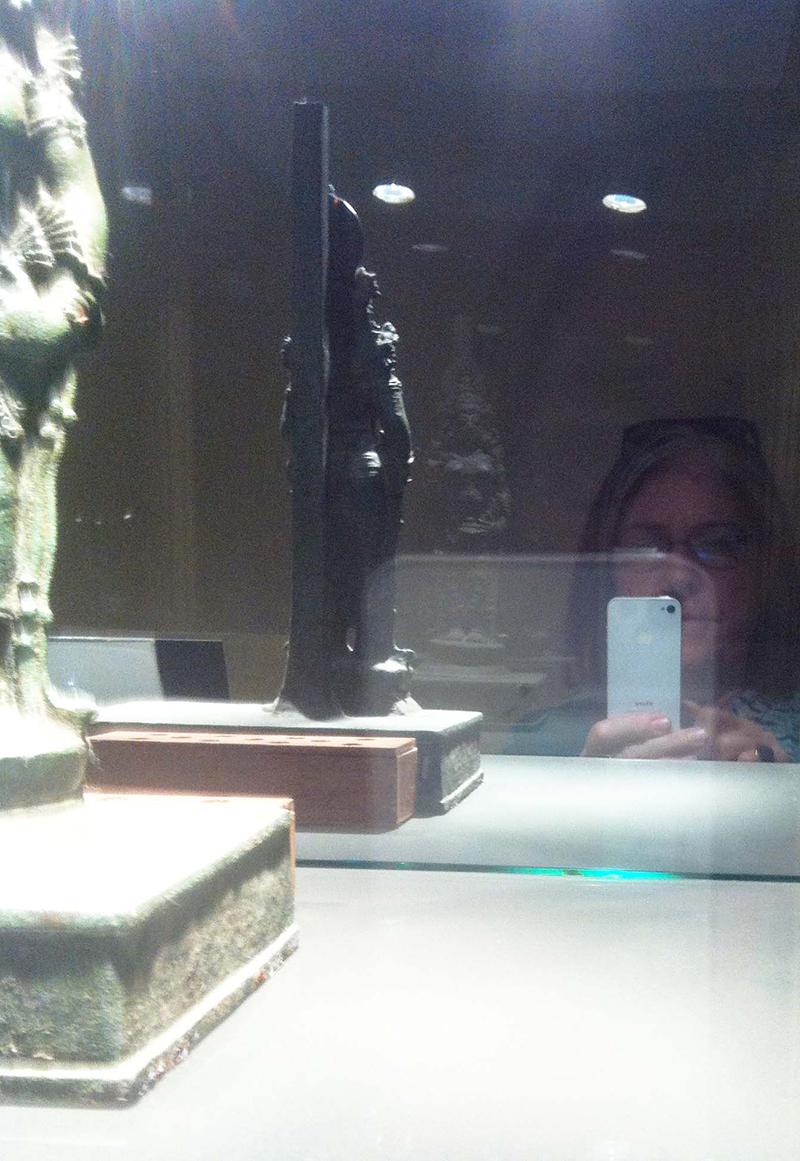
Do you actively do something for it, so that such ‘magic’ moments can happen?
Actually, no. I live my life and allow myself moments of the unexpected.
Are there moments when you doubt what you are doing?
I reject an idea almost every day and often doubt the quality of a particular project. Failure and the realisation that a project or a venture does not meet my standards are constant companions. I am never completely satisfied and from this drive I always draw new courage for something new.
In retrospect, can you find something positive in difficult moments?
Absolutely! I often reflect afterwards that a difficult moment or an inappropriate remark from someone also set me on new paths. Criticism, rejection, even ostracism (which one definitely experiences as an artist) have actually always given me a constructive turn in the end. Persevering with a theme, a thesis or a form of presentation has paid off for me.
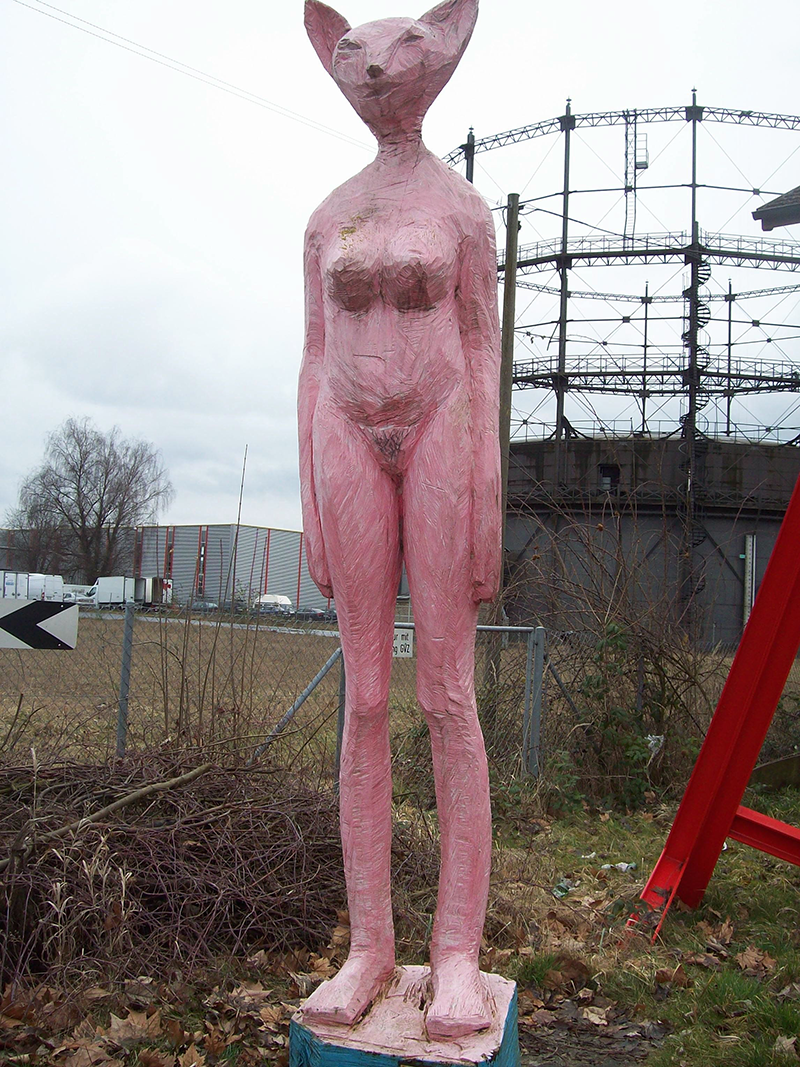
Is there anything you would do differently in retrospect?
In my life, a lot has flowed genuinely from one thing to another, I never had a clear career plan and the unconditional pressure for success is alien to me.
As a young woman, I was too mute for too long in an often male-dominated environment. I would approach this differently today.
Do you want to contribute to society with your activities?
Absolutely! Artists are part of the social fabric and it is precisely through the intensive confrontation with relevant contemporary issues that the artist can create signs that can be read in a different way than in a purely profit-oriented way and thus contribute to the formation of opinion.
For me, art is always political because it is created by people who are themselves part of this society. To influence, to act in an opinion-forming way and to set subversive signs is a strategy of my artistic activity.
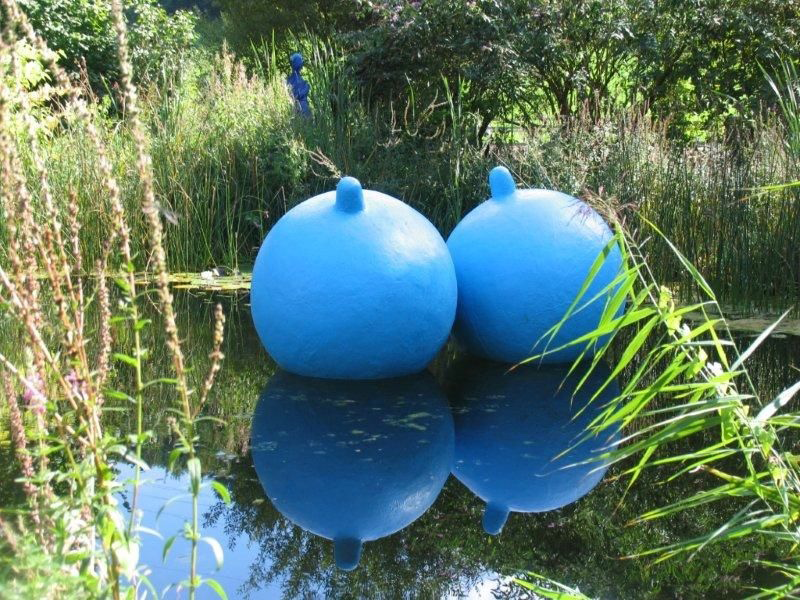
Is the recognition of other people or the public important to you?
Positive or even critical appreciation by the public is important for me. Appreciation in the form of purchases also ennobles a work – it is indeed the case that we live in a capitalist society and also gain recognition through the regulatory tool of money.
How well can you live from what you do professionally?
In the 90s, I was able to live quite well from my artistic work, back then the stock market profits were big and even middle-class people made quick profits and invested this in luxury goods. Those days are definitely over.
Today I live quite passably from an income conglomerate of various small jobs, projects and unexpected purchases. I can afford what I need for my artistic work and the books I want.
Is there something that is particularly occupying you at the moment?
No, I am constantly dealing with questions and problems concerning society and aesthetics. As soon as certain clarifications have been made, new questions arise again. This seems to be a constant flow that meanders through life.
Is there something you would like to (increasingly) spend time on in the future?
I will have to deal with how a self-determined life can be led when powers are dwindling or the spirit is lame. However, Hegel himself left much open for interpretation with his statement: ‘The mind is a bone’. Quote: ‘If it is otherwise said of the mind that it is, has a being, is a thing, a single reality, this does not mean something that one can see or take in one’s hand, push, etc., but such a thing is said; and what is said in truth is hereby expressed in such a way that the being of the mind is a bone.’ Now everything is clear and yet still completely nebulous. A lot to do!
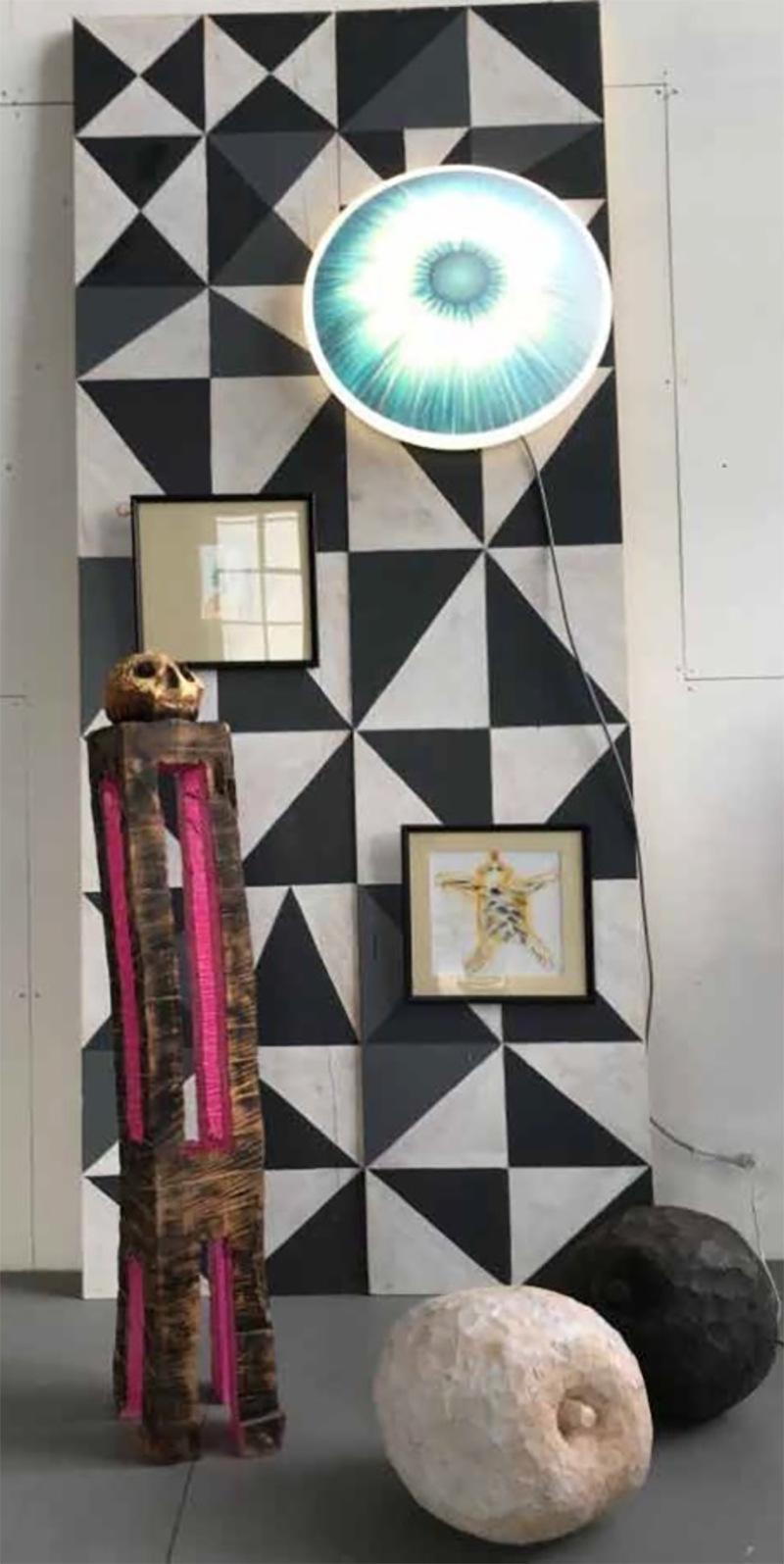
What are you most grateful for in life?
That I can live a good life surrounded by my family and good friends.
Interview
Laura Hilti, October 2020
Links
www.lilianhasler.li
Credits
Portrait photo: Bettina Stahl-Frick
Outdoor studio/ Fixer: Silvia Luckner
I’ll Wash Your Feet: Sven Beham
Water Breasts: Maja von Meiss
All other photos: Lilian Hasler
This interview is part of the project ‘Magic Moments’ by Kunstverein Schichtwechsel, in which people are interviewed about their careers, activities and their magical as well as difficult moments.
Curated by Stefani Andersen and Laura Hilti, Kunstverein Schichtwechsel.
Supported by Kulturstiftung Liechtenstein and Stiftung Fürstl. Kommerzienrat Guido Feger.
>>> All interviews
